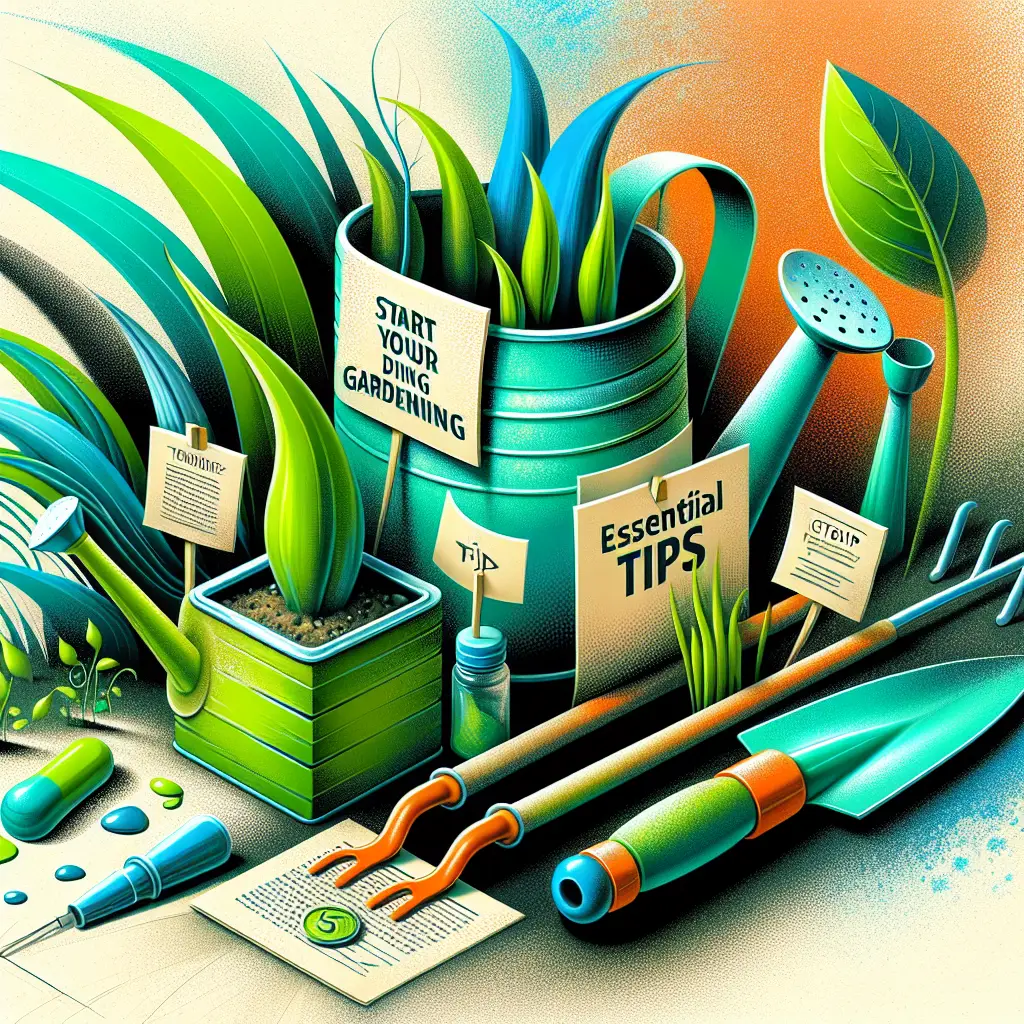Title: A Green Thumb’s Start Guide: Gardening for Beginners
Welcome to the world of gardening, a peaceful and rewarding hobby, where you can immerse yourself in the wonders of nature, nurture life and beautify spaces. If you are feeling a bit overwhelmed about when, where, and how to start, fret not! This comprehensive guide will provide you with gardening basics, shedding light on everything from choosing the right soil to watering techniques in your first garden.
Whether your dream garden involves vegetables, fruits, or simple decorative plants, the principles outlined here will help you every step of the way. So, get your gloves ready, and let’s dive into the adventure of turning a slice of the earth into your very own green paradise.
1. Picking the Perfect Location
The first step to your gardening journey is to pick a suitable location. Most plants require at least 6 hours of sunlight each day, so observe your proposed site at different times to ensure enough sunlight exposure. Moreover, ensure the land is flat or gently sloped to prevent water-logging during rainy periods. Lastly, easy access to water is essential – you don’t want to lug watering cans miles around your property!
2. Understanding Soil Types
A crucial aspect of gardening is understanding the ground beneath your feet. Not all soils are created equal, and your soil type can significantly impact plant health. Soils range from sandy (drains quickly but less nutrient-rich), silty (well-drained and more fertile), to clay (slow-draining and nutrient-rich). Composting can also improve soil quality, a process we’ll delve into later in the post.
3. Deciding on What to Plant
Deciding on what to plant can be overwhelming with a vast array of options available. Take into consideration your region’s climate, your soil type, and your personal preferences. Some easy plants for beginners include tomatoes, lettuce, marigolds, and sunflowers. Start with a few varieties to not overwhelm yourself.
4. Planning Your Garden Beds
There are two main types of garden beds – in-ground and raised. In-ground beds are traditional, where you directly plant into the earth. They require less initial effort but might need more maintenance and soil amendment.
Raised beds, on the other hand, require some upfront work (building and filling), but they offer better drainage, can heat up quicker in the spring, and the soil doesn’t get compacted since you’re not walking on it.
5. Planting Your Garden
When planting your garden, understanding the difference between direct seeding and transplanting is essential. Some plants prefer to be sown directly into the garden, while others fare better when started indoors or bought as seedlings to be transplanted.
In both cases, be sure to follow instructions regarding plant spacing, depth of planting, and care after planting. Seeds should be planted in a moist mix and kept in a warm, sunny spot. Plant seedlings with care, easing them out of their containers, gently placing in holes that are deep and wide enough, firming soil around them, and watering immediately after.
6. Watering Techniques for Beginners
Proper watering is critical to successful gardening. While the amount of water required depends on the type of plant and soil, a good rule of thumb for new gardeners is to water deeply and less frequently. This method encourages roots to dive deep into the soil, making plants more resilient in drought-like situations.
7. Battling Weeds and Pests
Every garden will contend with pests and weeds. For weeds, the best defence is a good offence. Mulching can keep your garden weed-free, and pulling weeds as soon as you see them prevents them from setting seed and spreading.
With pests, identification is key. Certain plants attract beneficial insects that naturally combat pests. Environmental controls like fences, nets, or row covers can physically protect plants from larger pests. Occasionally, organic or synthetic pesticides might be necessary, but use these judiciously to not harm the ecosystem.
8. Embracing Organic Gardening Practices
Organic gardening practices, such as composting, have numerous advantages. Composting turns kitchen and garden waste into nutrient-dense food for your plants while reducing landfill waste. Using organic mulches can also improve soil health, conserve water, and suppress weeds.
9. Patience is a Virtue
Probably the most important, yet often overlooked, gardening tip is that gardening requires patience. Plants need time to grow, and you will inevitably make mistakes. Remember, gardening is a journey. Whether it’s your first sunflower blooming, harvesting your first homegrown tomato, or attracting your first hummingbird, enjoy these milestones and find joy in the learning process.
The Final Bloom
Congratulations on taking the first step into the gardening world! We hope this comprehensive guide provides a solid foundation for your gardening journey. Remember, every garden and gardener is unique – what works for one may not work for you, and that’s okay! As long as you’re always learning, always growing (pun intended), and enjoying the process, you’re doing it right.
Whether your goal is to grow your own food, attract wildlife or simply beautify your surroundings, our ‘Gardening for Beginners’ blog is here to guide, inspire and celebrate your gardening victories, big and small. So dig in and bloom where you’re planted!
Happy gardening!



